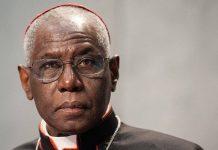Florence — the city of flowers — flourished in a special way in the 15th century, when men of great talent created works of art that gained enormous prestige throughout the West.
Newsroom (16/02/2025 Gaudium Press) The clash between medieval tradition and Renaissance paganism defined much of Florence’s cultural and religious history. Through the life of Saint Antonino, we see a story of faith, resistance, and the powerful role of saints in shaping history.
Early Life and Call to Faith
Born in Florence in 1389, Antonino was raised in an influential family. Despite his small stature, he demonstrated an extraordinary memory and deep faith from a young age. He entered the Dominican Order after impressively memorizing the canonical laws of the Church.
A Mission to Reform the Clergy
Antonino’s life as a priest and prior reflected his commitment to holiness and reform. His efforts in Florence, Rome, and Naples earned him the respect of both clergy and the faithful.
The Role of Providence: Antonino as Archbishop
Despite his reluctance, Saint Antonino was chosen to become the Archbishop of Florence in 1446. His appointment marked a significant moment in the city’s history, as he fought against the corrupting influence of the Renaissance and its artistic paganism.
Saint Antonino’s Spiritual Legacy
Saint Antonino’s life was marked by a commitment to spiritual purity and an uncompromising stance against secular vices. He became known as “Antonino, the Counselour,” advising many leaders of his time on matters of faith and morality. Saint Antonino’s impact was felt not only in Florence but throughout Italy. His resistance to the Renaissance influenced the pace and direction of cultural change. His role as a counterbalance to Renaissance excesses shows the enduring power of a saintly life in shaping history.
Compiled by Donna Smolders



































